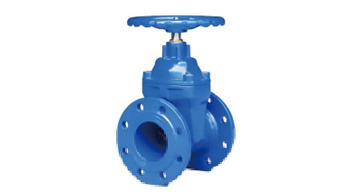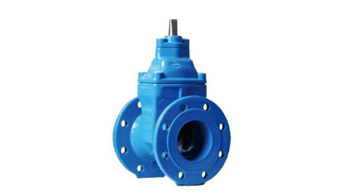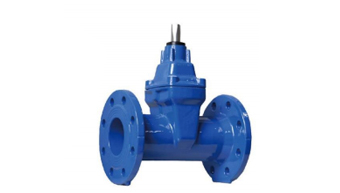FAQ
CONTACT
- Tongling Wusong Valve Co.,Ltd
- Address:No.3636,Qifeng Road,Shizishan Economic Zone,Tongling,Anhui,China
- Tel:0086 0562-2826399
- Fax:0086 0562-2826899
- Domain:
How to test the pressure of various valves
Update:2019-05-15 From:Tongling Wusong Valve Co.,Ltd
Pressure test method for various valves
Under normal conditions, industrial valves are not strength tested during use, but body and bonnet or corroded damping body and bonnet should be strength tested after maintenance.
For safety valve, the set pressure and backflow pressure tests shall comply with the specification and relevant regulations.
Valve installation shall be tested for strength and tightness.
Low pressure valve check 20%. If unqualified, 100% should be inspected; Medium pressure and high pressure valves should be checked 100%.
Commonly used valve pressure test media are water, oil, air, steam, nitrogen and so on. The pressure test method for industrial valves with pneumatic valves is as follows:
1. Ball pressure test method
Pneumatic ball valve strength test should be conducted when the ball is half open.
1. Sealing test of floating ball valve: the valve is in the half-open state, one end is introduced into the test medium, and the other end is closed; The ball valve rotates several times and the closing end is opened when the valve is closed. Check packing and gasket for sealing performance.
There must be no leakage.
The test media is then introduced from the other end and the test is repeated.
2. Fixed ball valve sealing test: before the test, the ball idles for several times. When the fixed ball valve is closed, the test medium is introduced into the specified value from one end; The pressure at the inlet is used to check the sealing performance of the front end and the accuracy of the pressure gauge.
Level 5 to 1, with a range of 1.5 times test pressure.
Do not decompress within the specified time; The test media is then introduced from the other end and the test is repeated.
The valve is then left partially open, the end closed, the chamber filled with media, and the packing and gasket are checked under test pressure with no leakage.
Three-way ball valve shall be tested for leakage at all locations.
2. Check valve pressure test method
Check valve test status: lifting check valve disc shaft is located in the position perpendicular to the horizontal; Swing check valve channel shaft and baffle shaft are located approximately parallel to the horizontal line.
In the strength test, the test medium is introduced from the inlet end to the specified value, the other end is closed, and the valve body and bonnet are not leaking.
Seal test introduces test medium from outlet end. Check the sealing surface at the inlet end. Packing and gasket are acceptable without leakage.
3. Pressure test method of reducing valve
The strength test of pressure reducing valve is usually assembled after single piece test, or can be tested after assembly.
Duration of strength test: lmin of DN×1mm; DN65-150 - mm more than 2 min. DN \\ u003e150mm over 3 min.
After the bellows and assemblies are welded, apply 1.5 times the maximum pressure of the pressure-reducing valve and conduct strength test with air.
Seal test according to the actual working medium.
When tested with air or water, the test is performed at 1.1 times the nominal pressure; Maximum allowable working pressure at operating temperature when using steam test.
The difference between inlet pressure and outlet pressure is no less than 0.2mpa.
The test method is as follows: after setting the inlet pressure, gradually adjust the adjusting screw of the valve, so that the outlet pressure changes sensitively and continuously within the maximum and minimum values, without stagnation or interference.
For steam reducing valves,
When inlet pressure is removed, valve closes after valve closes, and outlet pressure is highest and lowest. Within 2 minutes, the outlet pressure should increase according to table 4.176-22. Also, the volume of the pipe behind the valve meets the requirements in table 4.18.
For water and air pressure-reducing valves, when the inlet pressure is set and the outlet pressure is zero, close the pressure-reducing valve for sealing test, no leakage within 2 minutes.
4. Butterfly valve pressure test method
The strength test of pneumatic butterfly valve is the same as that of globe valve.
The sealing performance test of butterfly valve should be conducted at the end of medium flow. The disc should be opened and the other end closed, and the injection pressure should be specified. After checking that the package and other seals are not leaking, close the disc and open the other end to check for butterflies.
Plate seal without leakage is acceptable.
Butterfly valves, which regulate flow, may not be able to be tested for tightness.
5, plug valve pressure test method
1. Test the strength of the valve when the plug is plugged, introduce the medium from one end, close the remaining channel, and rotate the plug sequence to the fully open working position for testing. The valve body was not found to be qualified.
2. In the sealing test, the straight cock shall keep the pressure in the cavity equal to the channel pressure, rotate the plug to the closed position, check from the other end, and then rotate the plug 180° to repeat the above test; Three - or four-way plug valve
The pressure in the chamber should be kept equal to the end of the channel. The plug should be rotated in turn to the closed position, pressure introduced from the right Angle end, and inspection conducted simultaneously from the other end.
Prior to the plug valve test, non-acid allows for the application of a thin lubricant on the sealing surface and no leakage or increased water droplets are detected for a specified period of time.
The test time of the plug valve can be shorter, usually 1 to 3 minutes according to the nominal diameter.
The gas plug valve shall be tested at 1.25 times working pressure for tightness.
6. Pressure test method for diaphragm valve
Diaphragm valve strength test from both ends into the medium, open the disc, the other end closed. The valve body and bonnet will not leak when the test pressure rises to the specified value.
The pressure is then reduced to seal test pressure, the disc is closed and the other end is opened for inspection. No leakage is acceptable.
7. Pressure test method for globe valve and throttle valve
For the strength test of globe valve and throttle valve, usually put the assembled valve on the pressure test rack, open the disc, inject medium to reach the specified value, and check whether the valve body and valve cover sweat and leak.
Strength tests can also be done in one piece.
Seal test for globe valve only.
During the test, the stem of the globe valve is in a vertical state, the disc is open, medium is introduced from the lower end of the disc to the specified value, packing and check washer; After passing, close disc and open other end to check for leakage.
If the valve strength and tightness test, the first strength test, and then reduce the pressure to the specified value of the sealing test, and check the packing and gasket; Then close the disc and open the outlet end to check whether the sealing surface is leaking.
8. Pressure test method for gate valves
The strength test of gate valve is the same as that of globe valve.
There are two ways to seal gate valves.
1. Open the gate and increase the pressure inside the valve to the specified value; Then close the gate and immediately remove the gate valve to check for leakage or alignment of seals on both sides of the gate.
Inject the test medium into the plug on the bonnet to the specified value and check the seals on both sides of the plunger.
The above method is called medium pressure test.
This method is not applicable to seal tests of gate valves with nominal diameter less than DN32mm.
2. Another method is to open the gate and increase the valve test pressure to the specified value; Then close the shutters, open the blind plate at one end, and check the sealing surface for leakage.
Then go back and repeat the test until it passes.
Pneumatic gate valve packing and gasket sealing test should be conducted before sealing test. # # # 9. Pressure test method for safety valve
The strength test of the safety valve is the same as that of other valves.
When testing the lower body, the pressure is introduced from the I = I end and the sealing surface is closed. When testing the top of the body and bonnet, pressure is introduced from the E1 end and the other end is closed.
The body and bonnet are free from leakage for a specified period of time.
2. The general media used for seal test and constant pressure test are: the steam safety valve with saturated steam as test medium; Ammonia or other gas valves, with air as the test medium; Water and other non-corrosive liquids for valves to be tested
Medium.
Nitrogen is usually used as the test medium for some important locations of the relief valve.
The nominal pressure value shall be used as the test pressure, and the quantity shall be no less than two and no leakage shall be allowed within the specified time.
There are two kinds of leakage detection methods: one is to seal the joint of the safety valve. The thin paper is sealed on the El flange with butter, and the tissue expands into leakage and the bulge is unqualified; The second method is to dilute it with butter
Plastic plate or other plate sealed in the lower part of the outlet flange, disc filled with water, check the water for bubbles.
Safety valve constant pressure and back pressure test times are not less than 3 times, and the requirements are qualified.
For safety valve performance test, see GB/T 12242-1989 safety valve performance test method.
Valve pressure management regulation
1. After opening the packing case, check all valves, including the complete nameplate on the valve body, product quality certificate, whether the valve is closed or not, no other damage, such as blue surface, no stain, protective cover on both ends. \ \ r \ \?
2. Operators should be familiar with the operation of test bed.
3, valve pressure test JHA is perfect, operators should be familiar with valve pressure test, reverse transport and other safety risks of valve pressure test process: valve shell strength test, upper seal test, seal test.
(1) valve shell strength test medium is water, pressure is 1.5 times the nominal pressure of the valve, residence time is 5 minutes, no water or wet conditions.
(2) the sealing test medium on valve USES water with pressure 1.5 times of nominal pressure, residence time DN≤50 is 15s, 65≤DN≤300 is 60s, DN≥350 is 120s, no leakage qualified.
(3) conduct low-pressure seal test for valve seal test. The test medium is air (gate valve) with a pressure of 0.6mpa, residence time DN≤50 for 15s, 65≤DN≤150 for 60s, DN≥200 for 120s, with the same penetrating force.
Qualified requirements.
(4) it shall be used in time after the test pressure passes.
Compressed air blows dry water out of the valve chamber.
(5) valves with valve pressure test are marked on the body and unqualified valves are marked ×.
(6) after the pressure test, the valves shall be stacked separately according to the model and specifications, and the unqualified products shall be stacked separately; Distinct signage shall be erected in each stacking area.
After pressure test, the valve should be covered with colored strip in the stacking area.
(7) after valve pressure test, fill in "valve"/installation test record "in time according to the equipment, and fill in the procurement contract number on the valve body in the model column.
(8) "valve release record" shall be filled in the valve issued by test and signed by both parties.
(9) unqualified valves need to be built \\
 中文
中文 English
English



